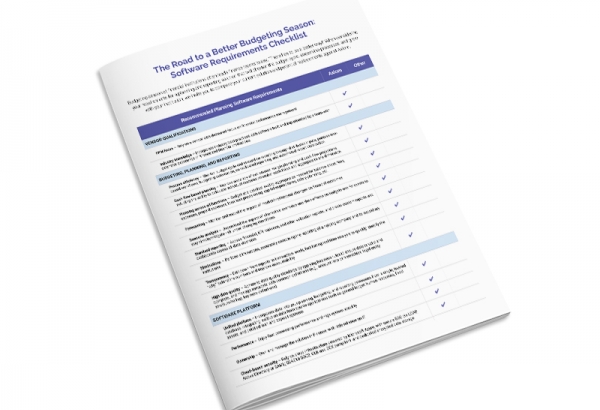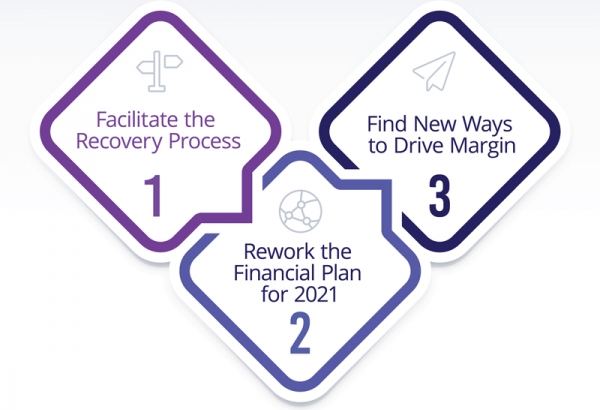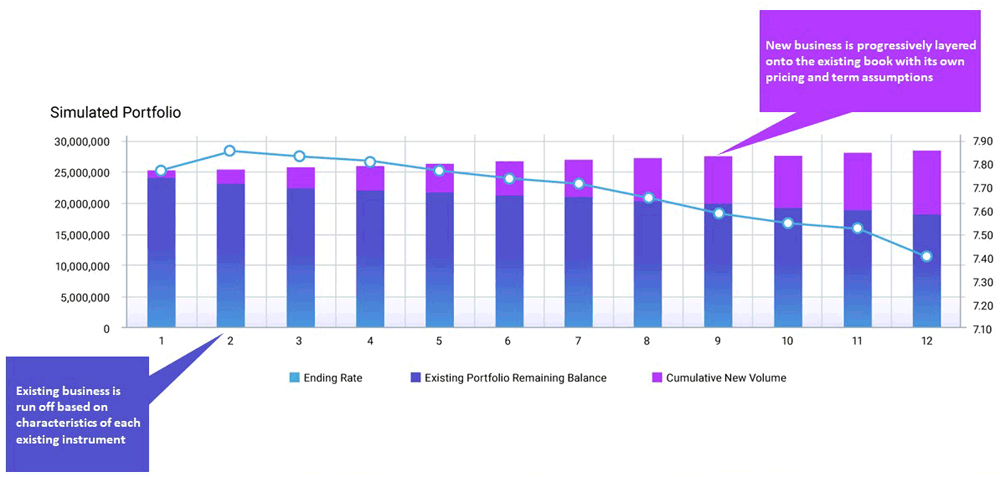Fundamentals and Best Practices in Budgeting, Planning, and Forecasting — Part 1
As COVID-19 continues to drive significant volatility across the economy, the financial services sector must adapt to a new environment wrought with uncertainties. Banks, credit unions, and other financial institutions must rethink their budgeting and planning processes with a fundamental question in mind: Is the juice worth the squeeze?
This was one of my dad’s favorite questions to ask us as kids. Whenever we were struggling, overwhelmed with too many tasks or conflicting priorities, this question served as a compass directing us to focus on those areas where the answer was a clear “yes.”
Now, amid these turbulent times, it is this question that can help financial leaders identify processes that will have the biggest impacts for their institutions. This is the first in a two-part blog series centered on this theme, drawn from my recent “Budgeting, Planning, and Forecasting Boot Camp” webinar series. Part 1 discusses four key areas:
- Balance sheet planning
- Non-interest income/expense
- Fee income
- Project-based planning
As we look to 2021, finance leaders should take a step back and reassess their current budgeting and planning processes to ensure they spend the most time and resources on areas that matter the most to their institution and not waste time on areas with little to no impact. Doing so enables your institution to better face both the challenges that you can see coming and the unknown challenges that lie ahead.
Balance Sheet Planning
First, organizations should consider the level of detail needed for balance sheet planning to support targeted balance sheet growth, net interest income plans, and capital needs. Net interest income comprises about 70% of total income for most U.S. banks, and as much as 80%-90% for some — making balance sheet and margin planning a primary focal point in the overall planning process. Having a comprehensive balance sheet plan will best equip executives, senior managers, and line of business managers to develop better growth strategies and to understand the full financial and operational impacts of the plan.
Finance leaders have a few options for projecting balance sheet and margin, but we recommend performing cash flow-based planning within your budgeting and planning system. This allows institutions to take cash flows that are projected for all existing business instruments and aggregate them to any level needed for balance sheet and earnings planning, be it by line of business, region, product, or even the department/business-unit level. In addition to modeling cash flows for existing instruments, cash flows from new volumes should be added over time and layered on top of these existing business runoff projections (Figure 1).
This approach provides enhanced accuracy for line-of-business, regional, or branch-level projections, as well as added efficiencies as institutions look to analyze different scenarios or reforecast. We have seen many organizations doing this due to the impacts of COVID-19.
Those projections can be combined with non-interest income and expense forecasts to establish comprehensive budgets for each segment of the organization. Leaders then can analyze the budget, verify whether it meets strategic goals, and make necessary adjustments to achieve their organizations’ growth and spread goals.
Figure 1. Cash Flow-Based Forecast
We also recommend forecasting net interest margin by including projected funds transfer pricing (FTP) rates and associated transfer credits and charges, and then applying those credits and charges against the projected interest income and expenses for specific instruments. This provides line of business and business unit managers with specific net interest margin targets, in addition to the traditional growth and yield/cost of funds goals.
Non-Interest Income/Expense
Finance leaders should also identify the biggest impact areas for non-interest income and expenses. Over the past three years, salaries and benefits have grown to nearly 50% of total non-interest expense for the overall banking industry. As a result, we have seen many banks, credit unions, and lending associations begin to project salaries, benefits, and related payroll costs at the individual employee level. This provides the most accurate and flexible approach to payroll planning, and typically involves three key steps:
- Establish high-level drivers for various employee groups related to salary and payroll expenses, such as targeted global merit increases, bonus assumptions, and payroll taxes
- Apply those drivers and assumptions to individual employees to generate a detailed salary plan that is modeled at the employee level, providing an accurate projection of the financial impact
- Account for any additional adjustments needed, such as employee transfers, early terminations, or new full-time employee (FTE) requests
This approach requires that organizations have appropriate security controls to safeguard employee data. Finance leaders also will need to decide whether to allow managers to adjust targeted merit increases or bonuses for greater accuracy and whether to import employee-level data annually or monthly to support additional payroll reporting and analysis.
While we strongly recommend employee-level salary planning, it may not be the best option for all. Once again, you should assess whether you have the data and tools needed, and whether the juice is worth the squeeze for the additional accuracy.
Focus on Fee Income
In evaluating the income from fees, finance leaders should examine the best ways to grow income given the current margin environment. Many institutions were able to generate additional fee income from the recent Paycheck Protection Program (PPP) and increases in mortgage refinance business; however, these fees may quickly dry up, and institutions should consider focusing on growth around additional fee-based services to make up for continued margin compression.
In additional to growth strategies in fee-based business, organizations should also look to improve their non-interest income planning processes. In the planning process, fee income can be projected from other account forecasts and drivers for improved accuracy and efficiency. For example, new loan assumptions can serve as a driver to determine origination fees and expenses. Service fees for deposits and early withdrawals or wealth management fees also can be linked to projected growth in those respective areas.
Certain fees and expenses depend on account projections or drivers for other accounts. Linking these projections will help increase understanding and buy-in from managers, leading to increased accuracy in your projections. Thorough analysis of historical relationships can be the first step in the process.
Project-Based Planning
Another best practice for non-interest income and expense planning is to use project-based planning whenever appropriate, typically for larger projects that involve numerous related expenses. Project-based planning involves evaluating all operating and capital expenses that would be required for a specific project across various departments.
Project-based planning provides a complete picture of project expenses, allows leaders to simultaneously approve or reject a project and all related expenses, and facilitates easier expense tracking for approved projects throughout the year.
Additional Budgeting and Planning Best Practices
Some additional best practices also can help finance leaders enhance the accuracy and efficiency of their budgeting and planning processes, including:
- Plan at the right level of detail based on data availability, tool capability, effort required, and accuracy needed versus value added. A good best practice is to plan at the lowest level of detail you will need to perform variance reporting.
- Determine the best budgeting approach for your institution (centralized, distributed, or hybrid).
- Improve efficiencies and buy-in through enhanced workflow, training, and instructions by providing historical data access, setting up alerts regarding invalid or unexpected input values, seeding the budget with desired targets, and considering use of finance team liaisons to assist managers throughout their planning process.
- Think about the entire planning process with budgeting, forecasting, and long-range planning as a continuous cycle, or at least connected processes where inputs, assumptions, data, and results inform the other processes. The process of seeding results from a prior budget and/or forecast can help maintain continuity and increase efficiency when moving from one period to another.
Given the current environment, now is the optimal time to reexamine your organization’s overall planning processes — and its overall strategic and tactical plans — and make significant changes to determine the best course forward for your institution.
Nothing about today’s environment is like it was last year or the year before, and I don’t expect that it will be “back to normal” anytime soon. Organizations should seize the opportunity to make improvements in their budgeting processes today. It all starts with a no-holds barred assessment of whether your institution is spending its time, energy, and resources in the most impactful areas by always asking: Is the juice worth the squeeze?
You might also be interested in...

Budgeting Bootcamp #1: Fundamentals and Best Practices

The Road to a Better Budgeting Season in Your Financial Institution



